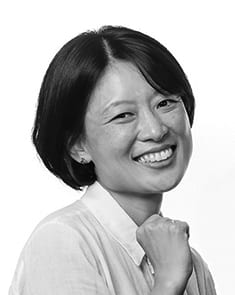PARK Mihi and Nuri CHOI
Centre for Language Studies, Faculty of Arts and Social Sciences (FASS)
Mihi and Nuri discuss the asynchronous and synchronous learning activities they implemented to continue supporting students as their Korean language courses go fully online.

Background
The Korean language programme at NUS has been applying the flipped approach to its classes for the past five years. The application of flipped classroom in foreign language learning is known to support students’ motivation and ownership of learning (Chen Hsieh, Wu, & Marek, 2016) and facilitate cognitive development and in‐depth, cohesive discussion (Kim, Park, Jang, & Nam, 2017).
Although majority of students taking the programme seem to have easily adapted to flipped learning, there are still some who require additional support from instructors to get familiarised with this learning mode, particularly at the beginning of semester. The support usually includes a focus on getting students to set a weekly routine of watching a recorded e-lecture before the face-to-face lecture. This could be done by making it compulsory for students to watch the e-lecture, and constantly monitoring and reminding them to do so.
However, during the second half of Semester 2 of AY2019/20, face-to-face classes were replaced by online lectures through Zoom due to COVID-19. As a result, students had to adapt to a fully online learning mode and some needed additional support from the instructors.
Observations
We made two key observations when this happened. First, as instructors in a language class, we had to address the challenge of not being able to provide timely feedback to our students on a fully online platform. Within a face-to-face context, we could walk around the class to check on students’ progress in their written work or oral activities and provide real-time feedback. This became virtually impossible on a fully online platform. Second, we observed a noticeable increase in the questions we received via e-mail or after the online lectures. These were questions where students wanted to clarify their doubts about the content covered in the recorded e-lectures and online lectures.
Addressing the Challenges
To address these challenges, we strengthened the asynchronous component by adding more worksheets, guiding questions, and readings to the pre-recorded e-lectures to encourage students’ self-direct learning and active participation in class. We then provided additional platforms to enhance interaction among students, as well as between instructors and students before and after each lecture. We implemented these strategies in the modules LAK1201 “Korean 1” and LAK2201 “Korean 2”, as follows:

Small Group Activities During Online Lectures
For online lectures, there were at least two small group activities for each lesson so that the instructors could attend to all groups to encourage active participation, particularly for activities where students had to practice speaking Korean.

Learning Community: Group Question-and-Answer (Q&A) Sessions and LumiNUS Forum
In LAK1201, short question-and-answer (Q&A) sessions were provided after each online lecture. These sessions helped the students to immediately clarify any doubts that arose during the lecture.
In LAK2201, students were encouraged to share their questions on the LumiNUS Forum. The instructors would answer these questions when the class met during Zoom meetings so that everyone could learn from the answers to these questions.

Individual Reflections
LAK2201 incorporated a compulsory reflections assignment in its syllabus for the entire semester, and it was a key platform for instructors to communicate with and support individual students. The reflections involved students having to do a summary of key sentence structures, and submit a composition of a few sentences comprising new vocabulary. Besides these tasks, students also had to reflect on their strengths and the challenges encountered in LAK2201. Through such reflections, the instructors were able to monitor their progress and also interact with individual students to provide more personalised support when classes were fully online.
In sum, during the four weeks of conducting fully online classes for LAK1201 “Korean 1” and LAK2201 “Korean 2”, we learnt that due to the reduced opportunities for interaction and close monitoring in this learning mode, instructors needed to stretch their regular teaching roles beyond that of a facilitator. Within the asynchronous online component, we provided additional structured activities, opportunities for interaction, and learning resources to support students’ self-directed learning. At the same time, instructors proactively approached individual students to provide timely guidance and supervision.
 |
PARK Mihi is a Senior Lecturer at the Centre for Language Studies (CLS) at the National University of Singapore (NUS). Her research interests include computer-assisted language learning programmes, multilingualism, and cognitive development through language learning. As a founding staff member of the Korean language programme at NUS, Mihi has been developing the curricula, materials, and assessments for these courses. Mihi can be reached at mpark@nus.edu.sg. |
 |
Nuri CHOI is a Lecturer at the Centre for Language Studies at NUS. She has coordinated and lectured Korean modules including LAK1201 “Korean 1” and LAK4203 “Korean7”. She is interested in flipped learning and developing curriculum for language classes. Nuri can be reached at clsnc@nus.edu.sg. |
References
Chen Hsieh, J. S., Wu, W.-C. V., & Marek, W. M. (2016). Using the flipped classroom to enhance EFL learning. Computer Assisted Language Learning, 30(1-2), 1-21. http://dx.doi.org/10.1080/09588221.2015.1111910
Kim, J., Park, H., Jang, M., & Nam, H. (2017). Exploring flipped classroom effects on second language learners’ cognitive processing. Foreign Language Annals, 50(2), 260–284. https://doi.org/10.1111/flan.12260

